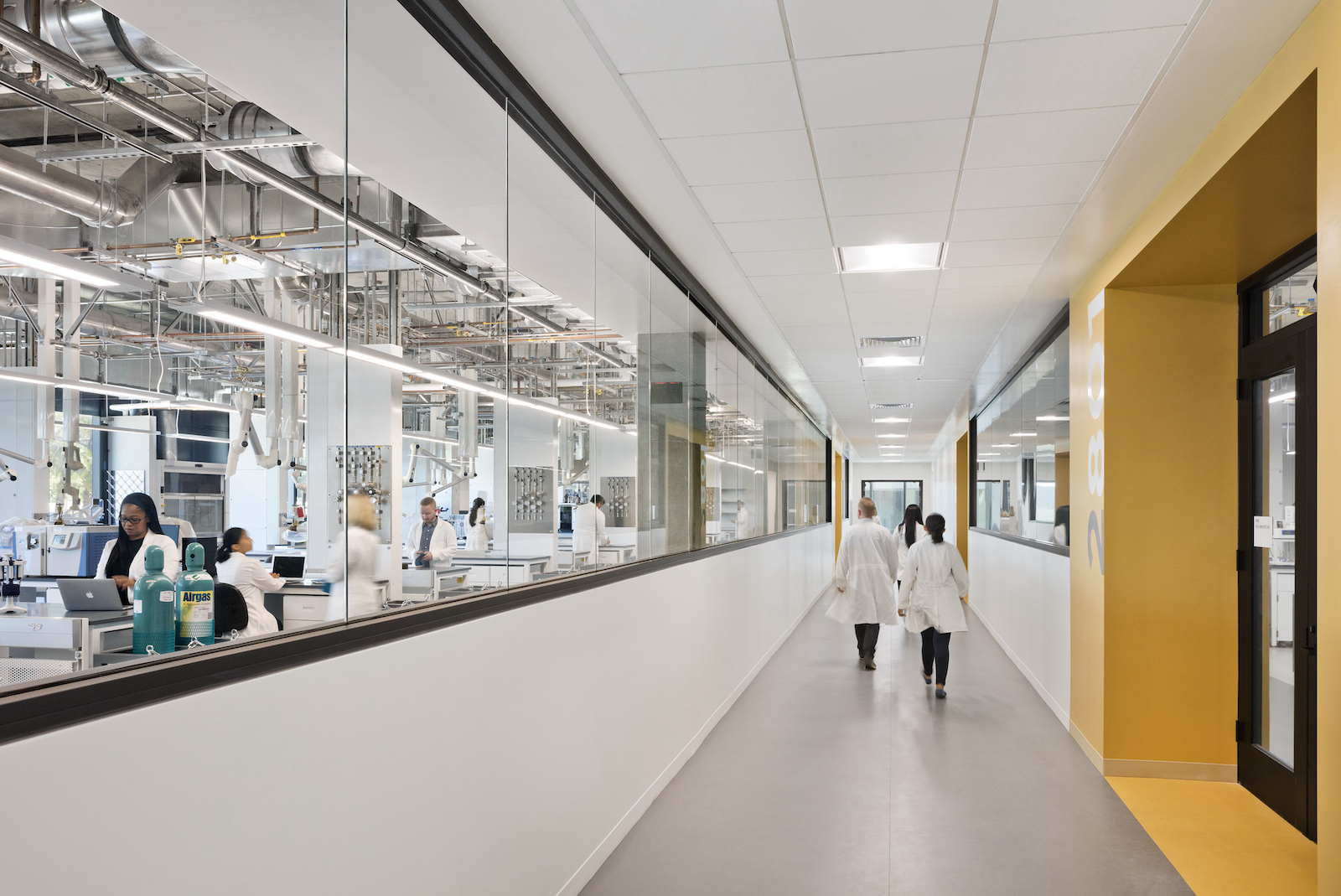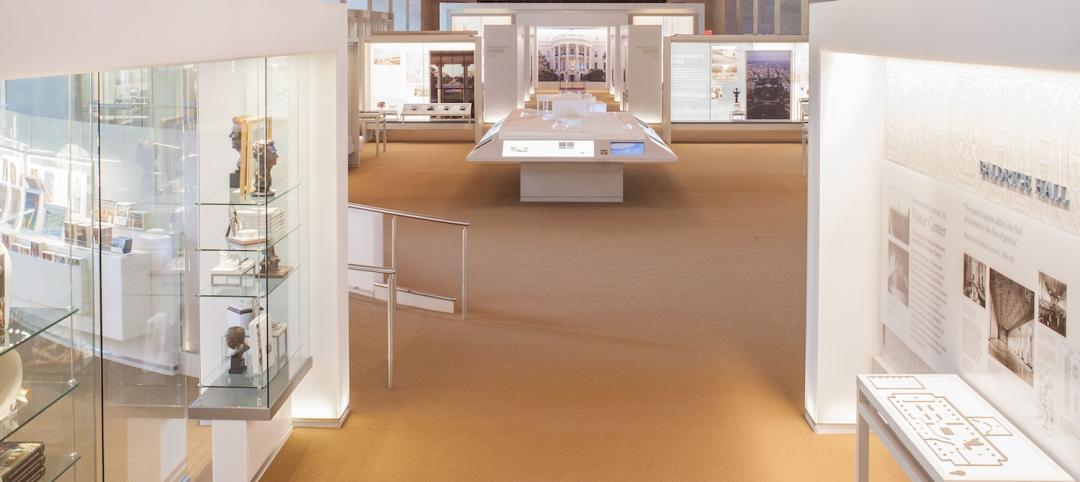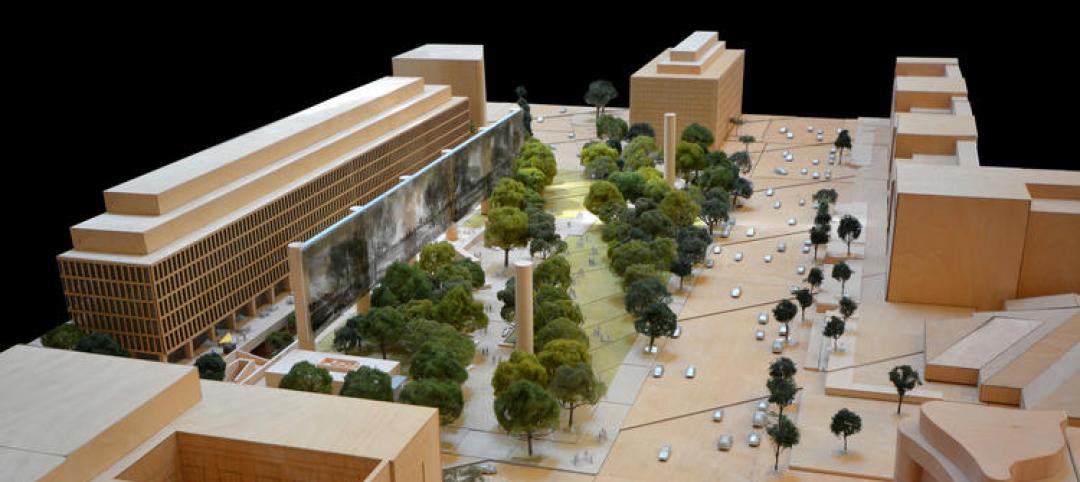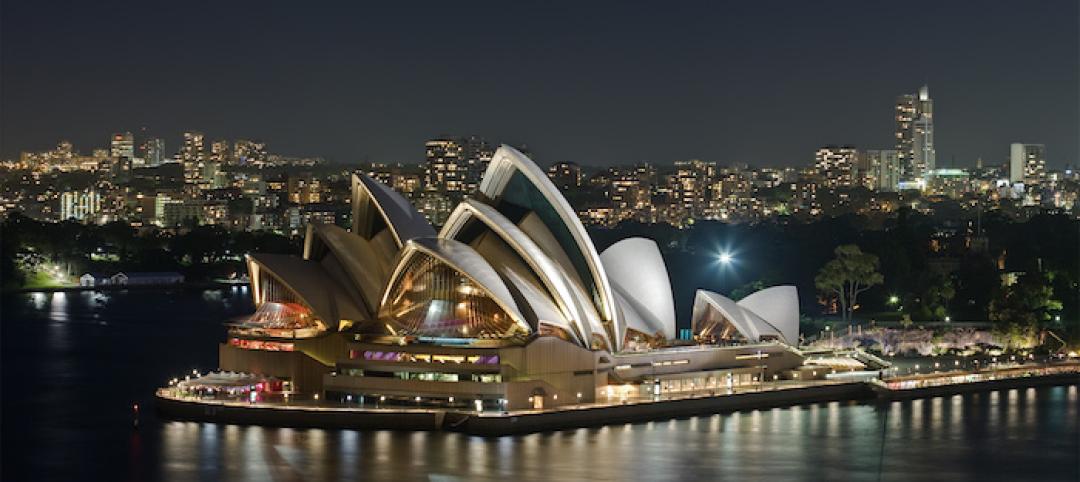The California Air Resources Board (CARB) Southern California headquarters has been completed in Riverside, Calif. The 403,306-sf is the largest vehicle emissions testing facility in the world and the largest net-zero facility of its kind.
The CARB headquarters exceeds California Title 24 requirements by 30% and lowers energy cost savings by 75%. All of the energy needed is produced onsite, making it resilient to power outages and protecting it from pausing its research operations.
CARB consolidated five existing locations across Southern California into CARB’s headquarters which improves performance and efficiency of operations while also providing a healthy workplace for the organization’s employees. The design team’s focus was not just reaching high-performance targets, but creating a quality environment for CARB’s employees.
The features of the headquarters include a complex program with myriad space types, including a main entrance and lobby, an employee entrance and lounge, a large auditorium, open office, conference room, light-and-heavy-duty vehicular emissions testing wings, specialized chemistry and hydrogen laboratories, and employee amenity spaces such as an expensive breakroom and a gym. The facility is sited on 19 acres to encourage biking, walking, public transit, and use of zero emissions vehicles to reduce transportation impacts.
The facility effectively connects users to the outdoors. The layout and form of the building establishes two principle outdoor spaces: the main courtyard to the east and a more private courtyard to the west. The building is oriented around the courtyards to lend itself to easy circulation, views, daylighting, and self-shading. Coupled with an abundance of low B VOC-emission trees and plantings, comfortable outdoor respite spaces are established for employee enjoyment.
The massing of the office building is consolidated into three stories that extend in three directions parallel to light duty testing, chemistry labs, and toward the conference buildings. This creates a smaller building footprint and shortens horizontal circulation networks, while using vertical connectivity established by a network of bridges and stairs to increase proximity between offices, testing areas, support spaces, and laboratories, resulting in increased flexibility, optimized adjacencies, and greater opportunities for intellectual collisions among employees. A variety of types and scales of meeting spaces, as well as coffee bars and cafés promote interaction and collaboration, especially for staff who circulate between the various departments throughout the day.
The ground floor of the open office atrium features testing control desks where employees conduct and operate the air regulation testing that occurs in the test cells. These inset spaces throughout the office building first floor are open and allow all users to see the AC dynamometers, among other testing equipment, in action.
Beyond putting CARB vehicular testing on display, the energy reduction strategies in the office building also largely contribute to the facility’s net-zero energy status. The integration of chilled beams allowed the atrium ceiling to be kept high, making way for the collection of skylights—a passive lighting strategy—that create expansive views of the naturally lit workspace. Paired with task lighting and daylighting harvesting, the office wing, which accounts for 41% of the total program, uses only 15% of the total energy needed to operate the building.

Energy reduction strategies include:
- Fluid cooler - Using hybrid coolers in conjunction with an elevated 570°F chilled water temperature reduced estimated energy consumption of the facility by approximately 8%.
- Aircuity and demand control ventilation - Continuous indoor air monitoring maximizes ventilation efficiency and energy reduction.
- Adiabatic humidification - Air is humidified without using steam or an additional heat source, reducing energy consumption.
- Active chilled beams - The hydronic air cooling system uses less air, reducing energy requirements and overall operating costs.
- Daylighting - Skylights increase interior daylighting. Motorized interior shades reduce glare.
- Lighting - Site lighting: high efficiency LED site in parking. Interior lighting: interiors incorporate all LED lighting, task-ambient lighting, daylight harvesting control, dual lighting / HVAC occupancy sensors.
- Electrical vehicle charging - 118 EV charging stalls provided on site with the ability to expand to a total of 149 EV parking stalls.
- Fume hood occupancy-based control - Occupancy-based sensors integrated into the chemistry lab fume hoods reduce energy demands.
- Exterior louvers - Exterior louvers integrated into the southeast and west facades reduce solar heating and glare.
- High-performance glazing - Low-e insulated glazing with exterior louvers increase operational energy efficiency.
The facility was completed in August 2021. ZGF worked with Hensel Phelps and Affiliated Engineers on the project.
Related Stories
| Oct 19, 2014
White House Visitor Center reopens in Washington, D.C.
Designed by SmithGroupJJR and Gallagher & Associates, renovated center shows public its unique role as office, stage, museum, park, and home.
| Oct 16, 2014
Perkins+Will white paper examines alternatives to flame retardant building materials
The white paper includes a list of 193 flame retardants, including 29 discovered in building and household products, 50 found in the indoor environment, and 33 in human blood, milk, and tissues.
| Oct 15, 2014
Harvard launches ‘design-centric’ center for green buildings and cities
The impetus behind Harvard's Center for Green Buildings and Cities is what the design school’s dean, Mohsen Mostafavi, describes as a “rapidly urbanizing global economy,” in which cities are building new structures “on a massive scale.”
| Oct 14, 2014
Proven 6-step approach to treating historic windows
This course provides step-by-step prescriptive advice to architects, engineers, and contractors on when it makes sense to repair or rehabilitate existing windows, and when they should advise their building owner clients to consider replacement.
| Oct 12, 2014
AIA 2030 commitment: Five years on, are we any closer to net-zero?
This year marks the fifth anniversary of the American Institute of Architects’ effort to have architecture firms voluntarily pledge net-zero energy design for all their buildings by 2030.
| Oct 9, 2014
Beyond the bench: Meet the modern laboratory facility
Like office workers escaping from the perceived confines of cubicles, today’s scientists have been freed from the trappings of the typical lab bench, writes Perkins+Will's Bill Harris.
| Oct 6, 2014
Frank Gehry's $100 million Eisenhower Memorial gets preliminary approval
After a rejection earlier in the year, Frank Gehry has gotten some good news: his revised design for the Dwight D. Eisenhower Memorial has received approval from the National Capital Planning Commission.
| Oct 2, 2014
Budget busters: Report details 24 of the world's most obscenely over-budget construction projects
Montreal's Olympic Stadium and the Sydney Opera House are among the landmark projects to bust their budgets, according to a new interactive graph by Podio.
| Sep 24, 2014
Architecture billings see continued strength, led by institutional sector
On the heels of recording its strongest pace of growth since 2007, there continues to be an increasing level of demand for design services signaled in the latest Architecture Billings Index.
| Sep 22, 2014
4 keys to effective post-occupancy evaluations
Perkins+Will's Janice Barnes covers the four steps that designers should take to create POEs that provide design direction and measure design effectiveness.
















